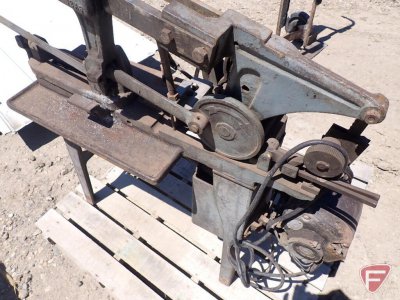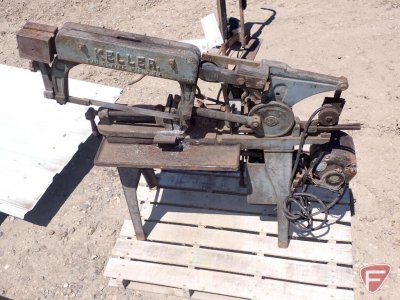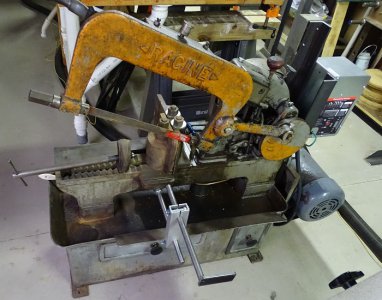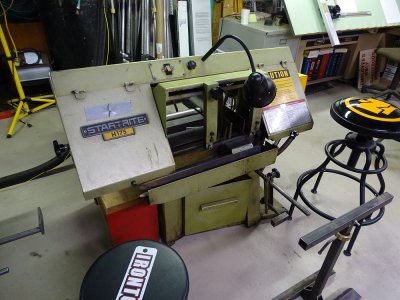- Joined
- Aug 2, 2020
- Messages
- 683
Am looking at a possible purchase of this old Keller power hacksaw.
Have a couple of questions about it before pulling the trigger. I understand that a PH is pretty slow compared to a bandsaw. Are they real slow, agonizingly slow or impossibly slow?
A typical project would be to cut some 1/4" wall 4" square tubing, some 1/2"x4" hot rolled or 2" round cold rolled. Ho do they do on something like 1/8"x1 1/2" angle iron?
I like vintage machinery and simply have no interest in China made tools or machinery (No offense to anyone if they do)
This machine does have a bit of wear - frame gibs and shaft bushings but nothing that seemed insurmountable. Is there anything on one of these that is not repairable and will make it just scrap?
Also, It does come with a coolant pump and reservoir. I don't know if it works.
Is it worth dispensing with that and going to an air/coolant mister?
I would like to have a bit larger saw but this one with a bit of tinkering might serve my needs till I found a better horizontal saw.
You guys who have them or had them do you like them?
Thanks
Have a couple of questions about it before pulling the trigger. I understand that a PH is pretty slow compared to a bandsaw. Are they real slow, agonizingly slow or impossibly slow?
A typical project would be to cut some 1/4" wall 4" square tubing, some 1/2"x4" hot rolled or 2" round cold rolled. Ho do they do on something like 1/8"x1 1/2" angle iron?
I like vintage machinery and simply have no interest in China made tools or machinery (No offense to anyone if they do)
This machine does have a bit of wear - frame gibs and shaft bushings but nothing that seemed insurmountable. Is there anything on one of these that is not repairable and will make it just scrap?
Also, It does come with a coolant pump and reservoir. I don't know if it works.
Is it worth dispensing with that and going to an air/coolant mister?
I would like to have a bit larger saw but this one with a bit of tinkering might serve my needs till I found a better horizontal saw.
You guys who have them or had them do you like them?
Thanks







